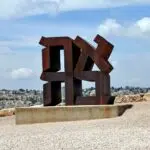National Braiders Day on August 8 is an opportunity for reflection, advocacy, education, and celebration of the cultural significance of hair braiding and the professionals who do it. Hair braiding is more than a form of style, it is a culturally significant act with deep roots in many communities. Unfortunately, braiding and braiders are often not treated with the same respect others in the cosmetology fields receive and are burdened by overbearing regulation. National Braiders Day is a chance to recognize the thousands of braiders around the country for their talents, hard work, and contribution to our cultural heritage.
History of National Braiders Day
Braiding has been a form of art for tens of thousands of years. There are examples of early humans enshrined in 25,000 year old artwork depicting figures with braiding. However, many credit the Himba people of modern Namibia, with imbuing braiding with cultural significance since at least 3500 BC. Many different cultures have contributed over the millennia to the growth and importance of hair braiding as well as different styles of braid. Imbued with societal significance, braids in the ancient world (and in some cases today) can indicate certain social status, ethnicity, religion, and more.
National Braider’s Day was founded in 2020 in order to give braiders a platform to raise significant issues plaguing their community. Often seen as lesser professionals by other cosmetological fields, braiders are still subject to overbearing occupational licensing requirements that can be debilitating and often cost braiders work. It was recognized that braiding and the (predominantly) women who do it deserve the same respect and opportunities as others, putting a well-deserved spotlight on the profession and its impact on our culture, past and present, which is why the day was started.
In 1997, Texas braider Isis Brantley was arrested as part of an undercover operation because she was braiding hair without a cosmetology license, even though braiders are not barbers. Brantley fought the law and after 10 years of effort, saw the Texas state legislature pass reforms that exempted hair braiders from onerous licensing requirements that had no bearing on their work.
National Braiders Day timeline
Ancient peoples leave behind artwork depicting figures with braids indicating that the practice is common among peoples in Europe, Africa, and the Pacific.
The Himba people of Namibia are generally credited with instituting braids on a cultural level some 5000 years ago. Braiding is still a major component of life for many cultures, particularly those of African descent.
After her arrest for braiding hair without a cosmetology license, Isis Brantley takes to advocacy, pushing the Texas legislature to change the law around braiding and licensing.
Brantley’s efforts result in a change to the law that exempted braiders from licensure, but still required 35 hours of instruction to legally braid hair. Brantley keeps fighting and is vindicated in federal court in 2015.
Ezbraid createss and sponsors National Braider’s Day and the first celebration takes place. Want to be a sponsor: learn how.
National Braiders Day FAQs
Is braiding hair a legal profession in the U.S.?
Yes, braiding hair is a recognized form of cosmetology though in most states it does not require a full cosmetology license in order to practice.
What is National Braiders Day?
National Braiders Day is a holiday meant to celebrate the cultural and professional significance of hair braiding and the thousands of men and women who do it for a living across the U.S.
How long have people braided hair?
There is a historical record of hair braiding dating back 30,000 years. It has been an important part of many African cultures since roughly 3500 B.C.
How to Observe National Braiders Day
Visit a hair braider
Professional hair braiders have had a long history in the U.S. but those who do it for a living have faced professional and regulatory hurdles. Show you support by having your hair braided professionally.
Learn about the history of hair braiding
As one of the most storied and diverse hairstyles on the planet, braiding transcends cultures and peoples and can be a cultural touchstone for many people. Learn more about hair braiding to grasp just how important this hairstyle has been throughout the ages.
Support those looking to improve the system
There are still 13 states in which hair braiders must pay for a cosmetology license, which can cost tens of thousands of dollars. Join a movement to reduce these regulatory hurdles.
Braids as a status symbol
Braids were often a sign of social status in Ancient Egypt and the wealthy would adorn their braids with gold, beads, and other decorative items.
Braids for protection
In many African and Caribbean cultures, braiding hair was a way to minimize hair breakage and damage caused by the environment.
Scalp health
Wearing them too tightly can lead to "traction alopecia," a type of hair loss caused by stress on the hair follicles.
A meditative practice
The repetitive motion of weaving the strands can be therapeutic for both the braider and the person getting the braids.
Viking culture
Norse men and women would braid their hair for various reasons, such as keeping it out of the way during battles or to demonstrate their strength and readiness.
Why National Braiders Day is Important
It’s culturally significant
Braiding hair has a long and important history dating back tens of thousands of years. Braids can distinguish between cultures, people, religions, and even societal structures. In the U.S., hair braiding has particular significance among the African American community.
It’s a useful style
For those of African descent with natural hair, braiding can help keep hair healthy as well as provide a versatile way to dress up or dress down one’s hairstyle for different occasions.
It is a diverse style
From box braids to french braids, braids come in many different styles each with their own cultural significance and aesthetic qualities.
National Braiders Day dates
| Year | Date | Day |
|---|---|---|
| 2025 | August 8 | Friday |
| 2026 | August 8 | Saturday |
| 2027 | August 8 | Sunday |
| 2028 | August 8 | Tuesday |
| 2029 | August 8 | Wednesday |



























